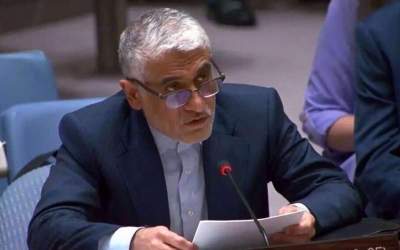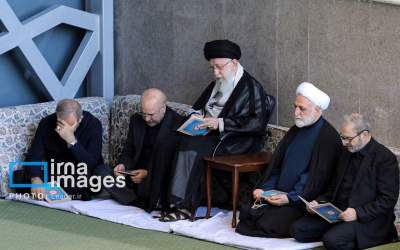Thursday 8 August 2019 - 18:48
Story Code : 356130
Low birth rate unprecedented over past three decades
�The number of births in our country is drastically decreasing,� IRIB news agency quoted Mohammad Javad Mahmoudi as saying on Wednesday.
In the Iranian calendar year 1394 (March 2015- March 2016), a maximum of 1,570,000 births occurred in the country, while a year later the population growth rate increased by 1.24 percent, he said.
During the Iranian calendar year 1395 (March 2016- March 2017), some 1,527,000 babies have been born in the country, and a year after, the number of registered births was reported 1,480,000, a difference of roughly 100,000 per year.
However, last year, the births reduced to 1,366,000, which was one of the largest declines in the history of birth rates, he lamented.
The number of births registered during the first three months of this year (starting on March 19), has declined by 13 percent compared to same period last year, he regretted.
He went on to add that during the first three months of this year, some 299,000 infants have been born, while during the same period last year the number of babies was reported 344,000, which is unprecedented in the past three decades.
He also emphasized that the trend shows that the general population policies and other relative measures should be taken seriously.
Ali Akbar Mahzoon, deputy director for the Statistical Center of Iran, for his part said that statistics show that population has grown to about 83 million since this year, which demonstrates an increase of 1.24 percent between the last two censuses.
Life expectancy increased to 74 years since the Iranian calendar year 1359 (March 1980- March 1981), as life expectancy at birth for males is 72.5 years, while that of females raise to 75.5 years, he noted.
Currently, there are 25.6 million households in Iran with an average size of 3.2 persons; almost two persons smaller than 5.1 persons reported in 1360s (1981-1991), Mahzoon stated.
Population estimates demonstrates that about 24.6 percent of the country's population are below 15 years old, 22 percent amounting to 18,269,000 are between 15 and 29 years old, he said, adding, and population aged 30 to 64 constitute 47 percent of the total population.
Elderly population aged 65 or above also accounts for 6.4 percent, while individuals above 60 years old amounting to 8,231,000 constitute 9.9 percent of the whole population, he stated.
Some 23 years ago, the major population were below 15 years old accounting for over 40 percent of the population, however, it decreased and now the country is facing elderly population growth, he concluded.
Iran�s population reached up to 80 million, while its growth rate declined to 1.2 percent a year. Censuses in 1350s-1360s (1971-1991), showed that population grew from 34 million to nearly 50 million, corresponding to an average annual growth rate of 3.9 percent (3.2 percent from births and 0.7 percent from net migration).
The country experienced the highest population growth rate over a 5-year period between 1980 and 1985, when the population grew by nearly 4 percent per year.
However, in the Iranian calendar year 1374 (March 1996- March 1997), the results of census showed a rapid decline in the population growth rate due to fertility decline, which dropped from 6.2 births per woman to 2.5 births per woman, over a decade.
Several socioeconomic factors led to fertility rate decrease and reproductive behavior in the country, including urbanization, education, financial issues, first marriage age, as well as increased access to family planning services along with increased time gap between the first born and marriage.
Iran currently achieved a demographic window of opportunity which must be seized now before its working-age population starts to shrink and get older in 2050s.
This is while, in a letter to the heads of medical science universities and colleges across the country, Health Minister Saeed Namaki has ordered the formation of a special committee aimed to prevent the country's population from declining, by development of infertility treatment centers, holding training courses of couples who refuse childbearing years after marriage, and intensifying prenatal care in less developed areas.
# Tags










